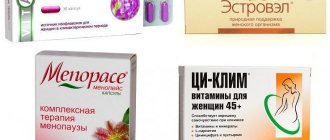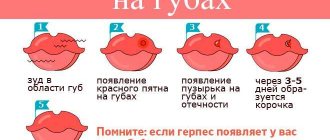Many parents are not even aware of the existence of such an infectious disease as roseola. And all because its symptoms are really very similar to the symptoms of the well-known rubella or allergy.
Source: Shutterstock
You can recognize roseola (or sudden exanthema, childhood three-day fever, pseudorubella) if you know the causes of its occurrence, symptoms and characteristics of the disease.
What is roseola
Roseola is an infectious disease that can be classified in the group of childhood viral infections, due to the fact that it affects mainly children under 5 years of age. Moreover, most often the disease is diagnosed in children aged 9 months to 1.5-2 years, because they have not yet developed antibodies to viruses. Newborns under the age of 9 months usually do not get roseola, since their bodies contain maternal antibodies acquired in the womb.
Once a child has been ill, he or she becomes immune to roseola. Repeated attacks are possible, but highly unlikely.
The causative agent of the infection: herpes virus type 6, which was discovered quite recently - in 1986, and in 1988 its connection with sudden exanthema was discovered. To date, it has not yet been studied very well; at least, somewhat less is known about it than about its relatives - herpes viruses types 1-5. Some scientists believe that this virus causes chronic fatigue syndrome in adults. Transmission of the virus occurs through airborne droplets from person to person.
Penetrating into the body through the mucous membranes of the mouth and nasopharynx, the virus enters the blood and spreads throughout the body.
Prevention
In order not to get roseola, you need to adhere to banal rules that promote health. These include the following activities:
- hardening procedures;
- regular and adequate physical activity;
- nutrition balanced with basic ingredients and enriched with vitamins;
- quitting smoking and drinking alcohol;
- additional intake of vitamin and mineral complexes during transitional seasons of the year and during epidemics of respiratory infections;
- developing stress resistance and a positive outlook on life.
Roseola is not a dangerous viral infection for adults, but skin rashes can be a manifestation of serious illnesses. A timely diagnosis and proper treatment will help avoid health problems.
Author: Tatyana Palashkina, doctor, especially for Dermatologiya.pro
List of sources:
- Handbook of a practicing physician, ed. Denisova I. N., Ulumbekova E. G. Medical academic book, 2000.
- Therapist's Handbook, ed. Astapenko M. G. Medicine, 2001
Roseola in adults may indicate the presence of an infectious disease. Most often it is shingles, typhoid fever or syphilis. In some cases, such rashes accompany mononucleosis, which is extremely rare in adults. The rashes are small spots of light pink color, irregular in shape and blurred boundaries. The diameter varies from 1 to 10 mm. By pressing on the spots or stretching the skin, the redness becomes less intense. The elements of the rash usually have a smooth surface.
How does pseudorubella occur?
- The incubation period for roseola in children is from 3 to 7 days, but sometimes the disease can appear even 2 weeks after infection. It usually occurs in an acute form. What are its symptoms?
- A sudden increase in body temperature to 39-40°C, with no cough or runny nose.
- The duration of fever is up to 3 days, and the temperature is reduced with great difficulty.
- After this period, the temperature drops sharply and a dark pink rash spreads over the baby’s body - slightly convex small dots or spots up to 5 mm in diameter. The usual area of rash is the back, chest, abdomen, but sometimes the rash can spread to the neck, face, buttocks, and limbs.
- A characteristic symptom of roseola rashes is that they do not cause itching and do not bother the baby in any way.
- The rash goes away without a trace after 3-4 days without any treatment. There are times when parents don't even notice it because the rash appears and disappears overnight.
- The roseola rash is not contagious; its appearance is a sign that the child is recovering and can no longer infect anyone.
- The disease is also characterized by enlarged lymph nodes - occipital and cervical.
- Diarrhea, rhinitis, redness of the throat, spots on the tongue and soft palate - Nagayana spots - are extremely rare.
Tatiana Volokha
pediatrician at the Ameda family clinic
Infantile roseola, or sudden exanthema, is a widespread childhood infection that is caused by herpes virus 6, less often type 7. Clinically manifested by fever for 3 to 5 days, general malaise and the presence of a small maculopapular rash on the skin of the face, trunk and limbs. As with any other viral infection, a child with roseola should be examined by a pediatrician to rule out more serious and dangerous conditions for the child. This disease in healthy children, without immunodeficiency and concomitant chronic diseases, does not require specific treatment.
ATTENTION! During a sharp increase in body temperature during roseola (febrile state), febrile convulsions in children are possible, including loss of consciousness. In this case, you need to call a doctor immediately!
Source: Fotolia
Such different rashes in children: how to recognize them. Photo cheat sheet for parents
Treatment
Photo from cevisa.org.br
Treatment of roseola in adults is carried out according to the same rules as the treatment of ordinary seasonal viral infections.
If a person’s immune system is relatively intact, it will cope with the roseola pathogen on its own, even without any medications. The pharmacological industry has not yet developed drugs that destroy various types of herpetic infections.
In the acute period, against the background of elevated temperature, doctors recommend adhering to the following rules:
- Compliance with the protective regime with limitation of loads of various types.
- Drink plenty of fluids with a predominance of fruit juices, compotes, infusions of anti-inflammatory herbs, weak green tea.
- Meals should include fruits, vegetables, oatmeal or buckwheat porridge, nuts, and dairy products. Feature: you don’t need to force yourself to eat, it’s better to fast a little.
- Air the room several times a day.
Among the medications for roseola, symptomatic drugs are often used; to reduce fever - Paracetamol, Ibuprofen and other non-steroidal anti-inflammatory drugs.
Patients should not self-medicate, as choosing the wrong drug or exceeding the dose taken will have a negative impact on health. Thus, taking acetylsalicylic acid or its derivatives for roseola causes severe damage to the brain and liver, which often leads to death.
For persistent, painful fever, traditional medicine for roseola recommends using compresses with a weak vinegar solution, taking tea from linden and calendula flowers.
If the attending physician diagnoses roseola in an adult, there is no need to worry, all symptoms gradually disappear. Complications rarely develop. The patient must follow all the doctor’s prescriptions, and relatives must try to create good conditions for him, provide him with a balanced diet and healthy drinks.
Possible complications of the disease
Roseola usually goes away on its own and does not require any treatment. However, there are statistics according to which 13% of children with primary herpes infection type 6 were hospitalized with suspected sepsis.
In general, the main complications of infection are associated with the effect of the virus on the central nervous system (CNS) - most often these are seizures, less common are bulging fontanel or meningoencephalitis.
Complications are most likely in children aged 12 to 15 months.
Rubella or roseola?
Common to these diseases:
- Both of them are caused by a virus, are considered “childhood” infections and are usually not severe at an early age.
- There is no treatment for rubella and roseola and, in fact, according to doctors, it is not required, since the child’s body itself is able to cope with the virus, and the task of the parents is to help him with this.
- Immunity against both viruses is lifelong.
Differences:
- Rubella begins with a rash accompanied by a rise in temperature. Often the rash is the first symptom of infection, while with roseola the rash is a sign of the production of immunoglobulins and the end of the disease.
- With rubella, the occipital lymph nodes are often enlarged, they become dense and painful. The submandibular area may also increase slightly. With roseola, there may be a slight enlargement of the cervical lymph nodes located under the child’s jaws.
- Both infections do not require treatment in childhood and are quite mild. Knowing exactly what the child has been ill with and against what infection he has developed lifelong immunity is important in order to understand whether it is necessary to get vaccinated against rubella, which is difficult to tolerate in adulthood and is especially dangerous during pregnancy.
Roseola rash also has its own characteristic features. If you press on a spot of rash for 10-15 seconds, with roseola it will steadily turn pale, and with rubella it will not change color.
Source: Shutterstock
Tatiana Volokha
pediatrician at the Ameda family clinic
Symptomatic treatment consists of drinking plenty of fluids and lowering the temperature with paracetamol or ibuprofen, especially in children with a history of febrile seizures. Almost all children under the age of 6 years have antibodies in their blood, which indicates a previous illness. The rash with roseola is similar to the rash with rubella, but unlike rubella, it appears after a period of fever of several days, and not on the first day of the disease, and does not itch.
How to distinguish an allergic rash
Diagnostics
An accurate diagnosis for roseola is very rarely made. While a number of studies are being carried out, the clinical symptoms are changing in a positive direction and the child is recovering.
Roseola is often mistaken for an allergic reaction to medications that the baby took during a fever. Thus, if a rash is present, the doctor will prescribe antihistamines. Roseola spots go away on their own, and while taking medications, the doctor only becomes convinced of the presence of an “allergie.”
In case of severe fever, it is important to conduct research to exclude the presence of other, more dangerous diseases:
- rubella, measles, scarlet fever;
- kidney infection;
- inflammation of the lungs (pneumonia) and bronchial tree (bronchitis);
- erythema infectiosum;
- intestinal infection.
A general blood test can indicate the presence of an infectious pathology: the level of leukocytes is reduced, and the number of neutrophils and lymphocytes is higher than normal.
A serological test of saliva and blood is also performed. If a child has roseola, the analysis will show a multiple increase in antibodies to Human herpesvirus 6.
Do I need to see a doctor?
It is definitely necessary, because, as mentioned above, the symptoms of roseola are similar to the symptoms of other diseases that are not so harmless for the baby. For example, allergies. Only a specialist can make the correct diagnosis.
In any case, do not delay visiting your doctor if:
- a temperature of 39°C or higher lasts for more than a day;
- elevated body temperature is observed for more than 7 days;
- the rash does not go away within 3-4 days;
- the baby is lethargic, apathetic, inactive;
- refuses to drink - water, formula or breast milk;
- the baby started having seizures;
- weak immunity of the baby - the risk of complications associated with high temperature increases in this case.
Summer skin problems for babies: diaper dermatitis, prickly heat, allergies











